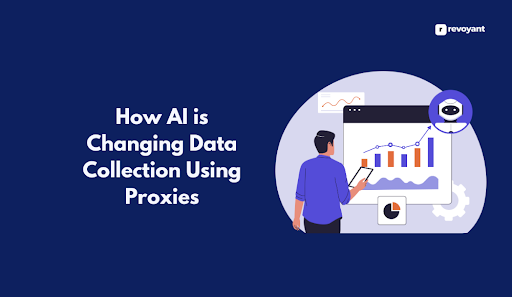Most data breaches happen because someone had access they shouldn’t. It’s that simple. Verizon’s 2024 report shows over 80% of breaches involve stolen or misused credentials. That’s not just bad luck! It’s a sign that old security methods aren’t working.
Zero trust access flips the whole narrative by assuming no one is trusted by default. Every access request has to prove it’s valid. But to make that work, you need more than a strong password policy. You need Identity and Access Management (IAM) to control who gets in, what they can see and how long they can stay.
This blog shows how IAM brings zero trust to life, in practical, no-nonsense steps you can start using now.
What is zero trust?
Here’s a sharper, no-fluff version of the intro — direct, clear, and actionable:
Zero trust is a security model that challenges a risky habit: assuming people inside the network are safe. It doesn’t do that. It checks every request, every time — no exceptions.
It’s built on three core rules:
- Always verify before granting access
- Only give access that’s needed
- Plan for breaches and limit the impact
This approach forces companies to take access seriously, not just at login, but across every system and action. It’s about controlling who gets in, what they can do and for how long. No standing access. No blind trust. To make zero trust access work at scale, you need a system that manages identities, enforces rules and adapts in real time.
That’s exactly what Identity and Access Management (IAM) does.
Here’s how IAM turns zero trust access from a concept into something you can use. Now, let’s look at where IAM fits into all of this.
What is Identity and Access Management Solution?
Identity and Access Management(IAM) is a set of tools and rules that help organizations manage who can access what. It handles user identities, checks permissions and controls how people log in and what they can see or do.
IAM solution covers:
- Authentication: Proving someone is who they say they are.
- Authorization: Giving them access only to what they’re allowed.
- User management: Creating, updating or removing users.
- Access reviews: Checking who has access and why.
IAM solution can work with both people and machines. That includes employees, contractors, customers, apps and even smart devices.
How IAM supports zero trust access
An identity and access management solution is not the complete solution for zero trust, but it plays a huge role. Let’s break down how IAM supports zero trust access, step by step.
1. Strong Identity Verification
The first rule of zero trust is to verify everything. IAM makes that possible by setting up strong ways to confirm a user’s identity.
This includes:
- Multi-factor authentication (MFA): Using two or more ways to log in, like a password plus a phone code or fingerprint.
- Single sign-on (SSO): Letting users log in once to access multiple apps safely.
- Biometrics and smart tokens: Extra checks that are hard to fake.
These tools help make sure only the right people get in.
2. Least Privilege Access
Zero trust says users should only get access to what they need, and nothing more. IAM helps enforce this with role-based access control (RBAC) or attribute-based access control (ABAC).
Here’s how that works:
- A person in HR gets access to payroll tools, but not engineering files.
- A contractor working for one week gets temporary access that expires automatically.
- A system flag (like location or device type) can help fine-tune what someone sees.
IAM solution makes sure people don’t have too much power, reducing the damage if their account is hacked.
3. Continuous Monitoring
Zero trust never stops checking. Even after someone logs in, their actions need to be watched. IAM supports this through session management and real-time alerts.
For example:
- If a user logs in from New York but suddenly tries to download files from Moscow, the system can flag it.
- If someone tries to access data they don’t normally use, IAM can ask for a second check or block the action.
This way, IAM doesn’t just let people in, but it keeps watching while they work.
4. Automated user management
Identity and access management solution can handle users throughout their full journey, from the day they join to the day they leave. In zero trust, it’s critical to make sure old accounts don’t stay open, and access rights are updated often.
IAM helps by:
- Auto-provisioning: Giving new users the right access based on their role.
- De-provisioning: Removing access when someone leaves or changes jobs.
- Regular reviews: Flagging accounts that look unused or risky.
This makes sure that every user’s access stays up to date and safe.
5. Device authentication
Zero trust starts with users, but it doesn’t end there. It also looks at the devices they use. A trusted user on an untrusted device is still a risk. IAM helps close that gap by enforcing access only from approved, secure devices. It blocks outdated systems, runs device health checks and ensures users can’t connect through risky endpoints. If the device fails, access is denied. Simple and effective.
This means:
- Allowing access only from managed or company-approved devices
- Blocking outdated or insecure systems automatically
- Requiring device health checks before granting access to sensitive apps or data
IAM solution uses device signals, like operating system, patch level or encryption status, to enforce these checks in real time. If the device doesn’t meet policy, access is denied or limited.
It’s not just about who is asking for access. It’s about what they’re using to ask. Device authentication closes a major gap and keeps attackers from using compromised or rogue devices to slip through.
6. Audit Trails and Reports
Zero trust needs clear records of who did what, when and where. IAM creates logs and reports that help with:
- Audits and compliance: Proving that controls are in place.
- Forensics: Investigating problems when something goes wrong.
- Ongoing improvement: Learning from patterns and fixing weak spots.
Without IAM, this kind of tracking is nearly impossible.
Why it matters
Without identity access management solution, zero trust can’t be enforced at scale. Zero trust requires constant control over who can access what and under what conditions. And IAM helps in making it possible. It verifies identities, enforces access policies, and adjusts permissions based on role, device, location or risk level.
Identity access management solution isn’t just about logging in. In a zero trust model, it’s the system that applies the rules. It ensures that users only get the access they need, for as long as they need it, and nothing more. It’s how companies:
- Lower the risk of insider threats.
- Catch unusual behavior early.
- Limit the blast radius if something goes wrong.
That’s why IAM is often the starting point for building zero trust. Without it, the rest of the model falls apart.
Getting started
You don’t need to overhaul your entire security setup overnight. Here are some simple steps to begin using IAM for zero trust:
- Start with MFA. It’s one of the easiest and most effective ways to improve access security.
- Review your users and roles. Remove unused accounts and tighten permissions.
- Use conditional SSO. Simplify access for users while tracking unusual behavior. A unified platform for users, devices and apps such as Scalefusion OneIdP can help manage identities and enforce stringent access conditions within consistent policies across systems.
- Automate where you can. Cut down manual tasks so access stays accurate and up to date.
- Train your teams. Make sure everyone understands why access control matters.
Final thoughts
Zero trust is now a smarter way to reduce vulnerabilities, threats and access risks in a connected world. And IAM is what makes that model work day to day. By verifying users, limiting access, and tracking activity, IAM gives enterprises the control they need without slowing down the business. The goal isn’t just to block threats but to enable secure access for the right people, in the right way.
Start small. Stay consistent. Tools like Scalefusion OneIdP make it easier to put zero trust into practice and keep your systems secure as you grow.





